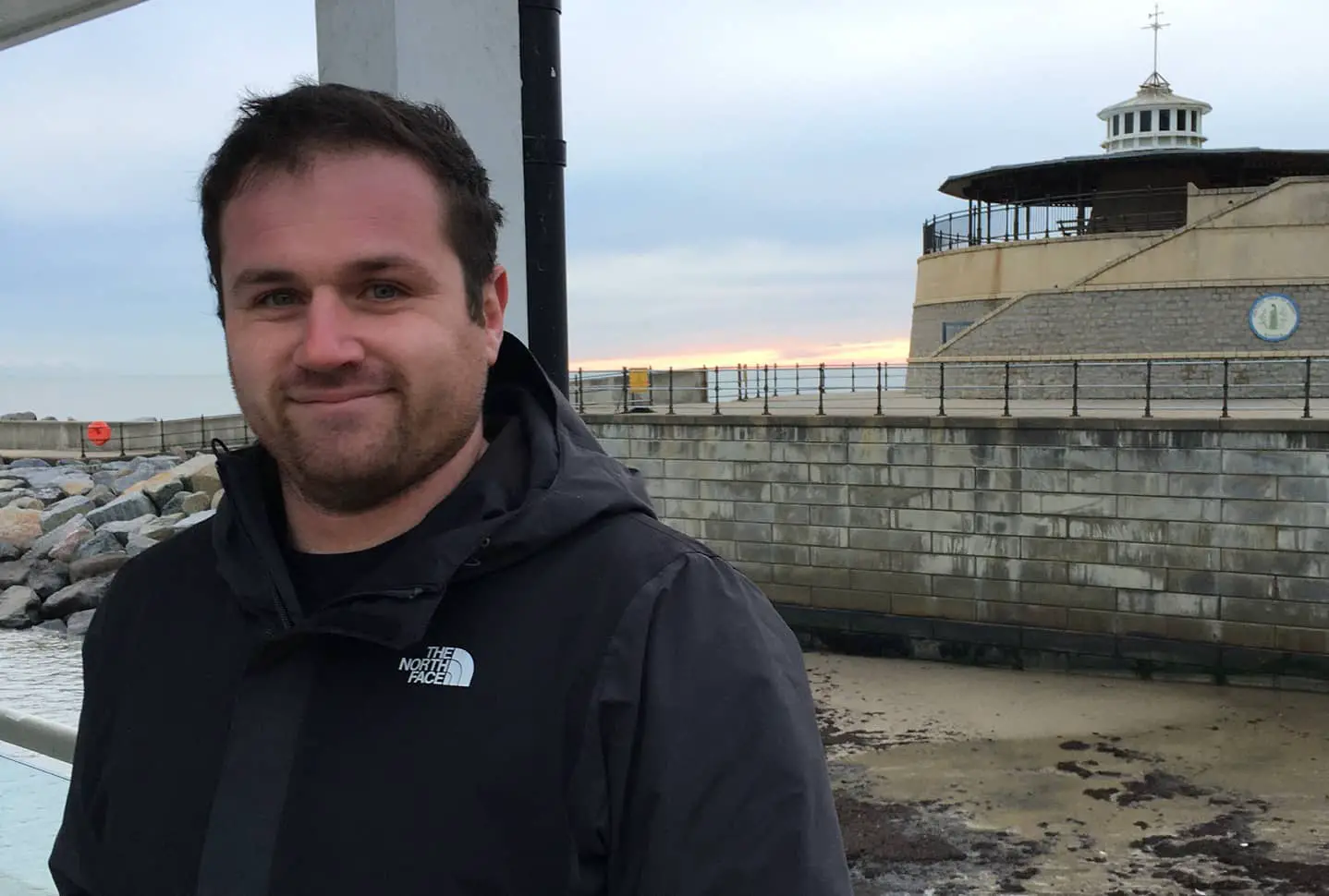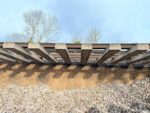At the end of the last week News OnTheWight reported that Ventnor Haven Management Limited (VHML) had won the five-year contract to manage Ventnor Harbour.
It was surprising to hear from Ed Blake, one of the co-founders of VHML, that he learnt the good news about winning the contract via News OnTheWight‘s article. It seems we beat Isle of Wight council (IWC) to informing him.
Ed got in touch after our article ran, wanting to share more detail about what VHML’s plans are for the Harbour, and to bust a few myths, so we popped down to find out more.
To get the full picture, go to the bottom of this article and have a listen to the podcast. Below we’ve picked out a number of the items that were spoken about.
A fair weather haven – poorly designed
Starting off by explaining that although it’s called Ventnor Harbour, he said it was “really a fair weather haven” rather than a deep water harbour.
It was interesting to hear that the design was something that you’d more normally see for an inland waterway and that because it was positioned where it was made it perfectly designed to trap seaweed and silt.
What should have been built, he said, was something with entrance perpendicular to the tide, rather than parallel as is the case.
Removing the seaweed
As reported extensively by News OnTheWight, the removal of seaweed and silt that had built up in the harbour, ended up in recent years costing the IWC over £100,000 a year.
The process to clear the seaweed and sediment involved a boat in the middle of the harbour with a pump on board that pumped the unwanted seaweed over the sea wall.
This would be done during particular tides to ensure it didn’t just wash straight back into the harbour, but failure of the pump has meant that the harbour hasn’t been cleared for the last year and a great deal of sediment and seaweed has built up.
Ed explained,
“The sediment mixes with the seaweed and creates a composite material that mats together, so it’s not just a case come along of brushing some seaweed up, it needs to be mechanically removed. It’s tough stuff.”
Impact of the build up
He described the pump boat more as a maintenance device rather than repairing device, adding that compared to this time last year, at places, they have an extra metre and a half of sediment in the harbour.
This build-up of seaweed and silt has a big impact on his family’s fishing business, given they barely have two hours each side of high water to exit or enter the harbour.
Blake: An absolute farce no-one’s been able to moor their boat
Ed explained that the contract doesn’t just include getting rid of the seaweed and silt, there are several other aspects to it. He said,
“It’s not just removal of the seaweed, it’s also putting in the visitor moorings again, and running the harbour as it should be.
“We’ve always been involved with the haven, but never had any decision-making at all, despite what people might think.
“We think it’s been an absolute farce that no-one has been able to come in and moor their boat, but it’s come down to the fact because there wasn’t a harbour master or berthing master, particularly at weekends, to take money off people. What’s the point in having insurance for visitors to come in if there is no benefit to that?”
“It’ll be very much open for business”
As the Blakes are there seven days a week, Ed said they’d get all the abuse from visitors angry at not being able moor up in the harbour, despite it not being their responsibility.
However, from 1st April 2023 there will be space made available for visitors, along with someone to oversee it happening. “It’ll be very much open for business,” said Ed.
New pontoons
Part of the money from the contract will go towards installing extra pilings and pontoons to get more visitors in, changing the current situation, where those travelling around the Island by boat have nowhere to stop between Bembridge and Yarmouth. It’s anticipated that this should attract more people into Ventnor from the Spring.
Installation of the new pontoons is likely to take place in the second year. In the meantime a tender from the harbour could be made available to collect passing visitors in yachts who want to come into town.
The money
There were two bidders for the contract, which initially was advertised by the council at just over £500,000 for five years.
Cheetah Marine, who have held it for over a decade bid £264,320 per annum, whilst VHML, bid £78,500 per annum. A figure much lower than the IWC have been paying each year. The money will be paid through monthly instalments over the five years.
Upfront investment
Ed explained that the service would be run as a not-for-profit.
“We’ve put in a relatively high initial year, for set up costs and corrections to get to the stage where we can maintain the depth rather than repairing the situation.
“In the next year when capital expenditure is needed less we can take the figure down. I only want to take out of it what is needed to correct the situation. I am not taking any money out of this.”
He continued,
“There are some quite large figures needed each year for things like insurance and compliance – there are quite a few hoops you have to jump through for that.”
Ed hopes that by the end of the five year period, not only will the harbour be in a position to “wipe its face”, but hopefully starts generating enough income to relieve the burden on the council, and ultimately, the taxpayer.
Diggers to remove silt
At some point after the contract begins Ventnorians will see diggers brought into the harbour to remove extra 300 tonnes of silt that Ed says has built up over the last year.
Pumping is going electric
The first year will also see an large investment in the electric pump. Ed explained,
“One of the key strategic changes we’re making is going away from diesel power and going to electric power, with the installation of the pump, and control panels.”
Another change will be that the pump will be positioned under the pier relieving the need to have an extra boat take up space in the harbour.
A range of other topics
Ed explained that the marine management dredging permit dictates that the seaweed and sand must be pumped over the western arm of the harbour wall, but they are trying to have that changed so it can be pumped over the eastern arm. The hope being that what is pumped is carried away by the tide, not back into the harbour.
We also talked to Ed about the effect that the tides have on what comes into the harbour, how issues in the harbour having been affecting the longshore drift, and we hear about the fishing industry on the Island.
Listen to the podcast
Click on the play button below to listen to the full interview (23 mins) with Ed Blake.





